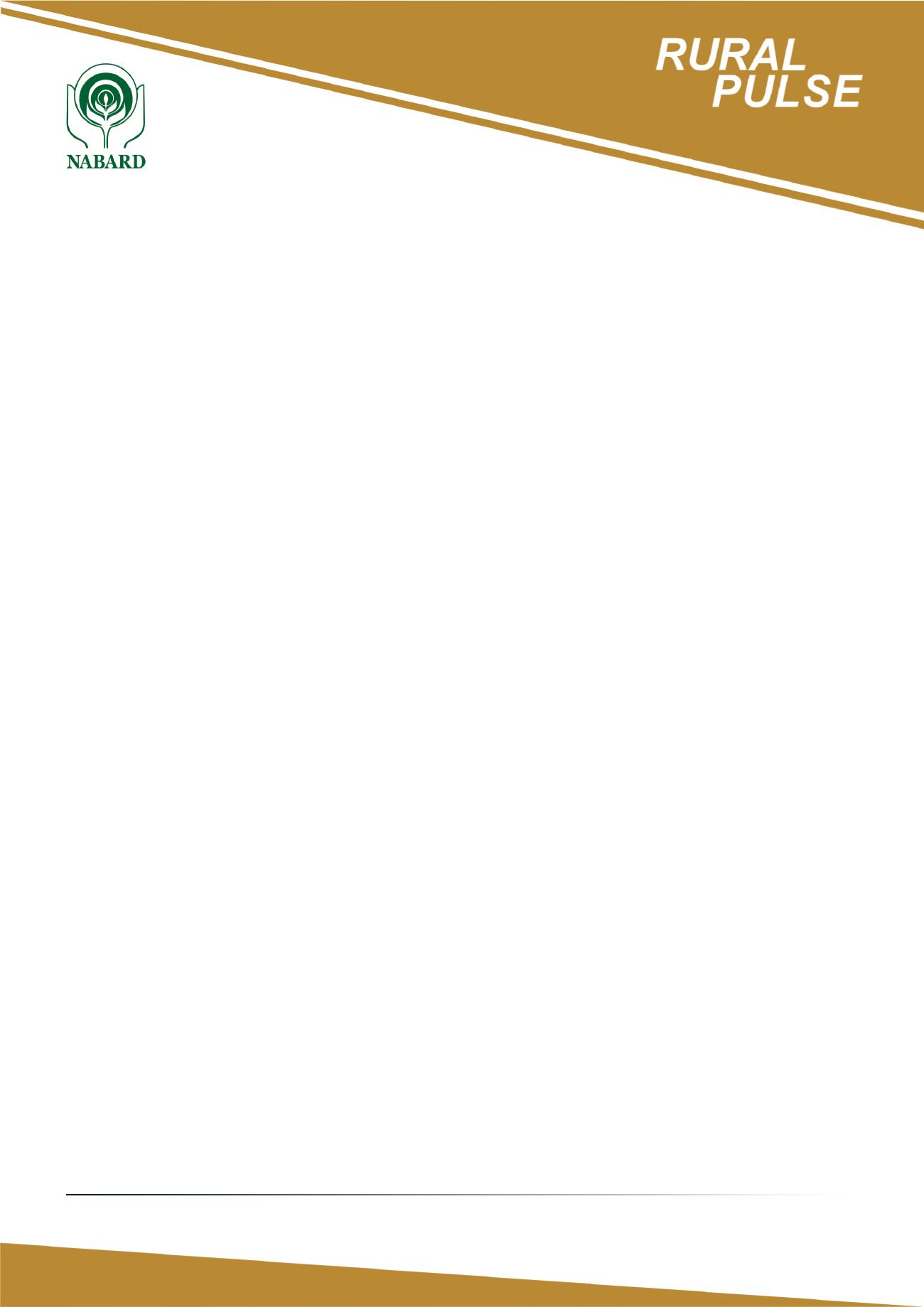
Department of Economic Analysis and Research
1
Protected Cultivation of
Horticulture Crops
C. V. Reddy
*
*
Deputy General Manager, NABARD,
NBSC, Lucknow
1. Types of Protected Cultivation
Green House
Green houses are climate controlled with cooling
and heating system and mainly used growing exotic
varieties of vegetables, off-season growing of vegetables,
floriculture, planting material acclimatization and plant
breeding and varietals improvement under adverse
agro climatic conditions. The degree of sophistication
of greenhouses include fully automated systems with
poly carbonate sheet roofing (double walled), heating
and cooling system and full scale computerized with
combination of various other components.
Poly House
Poly house is less sophisticated version of green house
with naturally ventilated climate controlled as against
the fully climate controlled green houses. Usage of poly
houses are similar to green houses for growing exotic
varietiesof vegetables, off seasonvegetables, floriculture,
planting material acclimatization, etc., under ideal agro
climatic conditions suitable for growing these crops.
Poly Tunnel
Poly tunnels are basically naturally ventilated climate
controlled. Poly tunnels have a variety of applications,
the majority being, growing of vegetables, floriculture,
planting material acclimatization, Poly tunnels are built
of a pre-galvanized tubular structure and mainly uses in
hilly and temperate regions withmoderate temperature.
Shade Net House
Net houses are basically naturally ventilated climate
controlled strcuture. Net houses have a variety of
applications, the majority being, growing of vegetables,
floriculture and for nurseries. Net houses are built of a
pre-galvanized channel cum tubular structure/ tubular
structure, wooden or bamboo structures mainly used in
regions with less rainfall.
Hydroponics
Hydroponics is a method of growing plants without soil,
using water enriched with balance mineral nutrients
essential for plant growth and yield. The nutrients and
PH level are maintained suiting to the selected crop for
better growth. Hydroponics is proved to have several
advantages over soil media such as:
• Suitable for vertical farming under greenhouse
conditions other modified structures
• Efficient use of plant nutrients without any fixation
or leaching like in soil culture
• Maintains right PH , Oxygen levels for improved
growth and productivity
• Less incidence of pest and diseases, especially non
incidence of soil borne diseases
Aeroponics
Aeroponics is the process of growing plants in an
air or mist environment without the use of soil or an
aggregatemedium. Aeroponics is proved to have several
advantages over soil based gardening and hydroponics:
• As aeroponics is conducted in air combined with
micro-droplets of water helps in faster and better
growth of plants with a plentiful supply of oxygen,
water and nutrients
• Plants in a true aeroponic conditions have 100%
access to the CO2 concentrations for photosynthesis
• Aeroponics can limit disease transmission since
plant-to-plant contact is reduced and each spray
pulse can be sterile. In the case of soil, aggregate,
or other media, disease can spread throughout the
growth
2. Components of Protected Cultivation
Structures
Depending upon the type of covering structure like
green house, poly house, poly tunnels and shade net
and type of crops proposed for growing and the level of
control of atmosphere required, the commponets varies
from strcuture to strcuture and location to location. The
broad list of components of the protectecded strcutures
and advantages of protected cultivation technolgies are
given below:
Issue : XX March - April 2017
Protected cultivation practices can be defined as a cropping technique wherein the micro environment
surrounding the plant body is controlled partially/ fully as per plant need during their period of growth
to maximize the yield and resource saving. The different type of structures and technologies are used in
commercial protected cultivation. The level and type of adoption of technology depends upon location, type
of crops grown, type of market targeted and quality of production required. Various types of structures and
technologies adopted for commercial protected cultivation are given in this issue.


